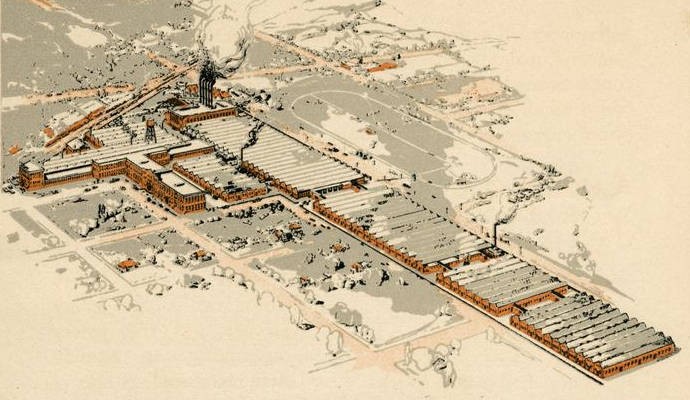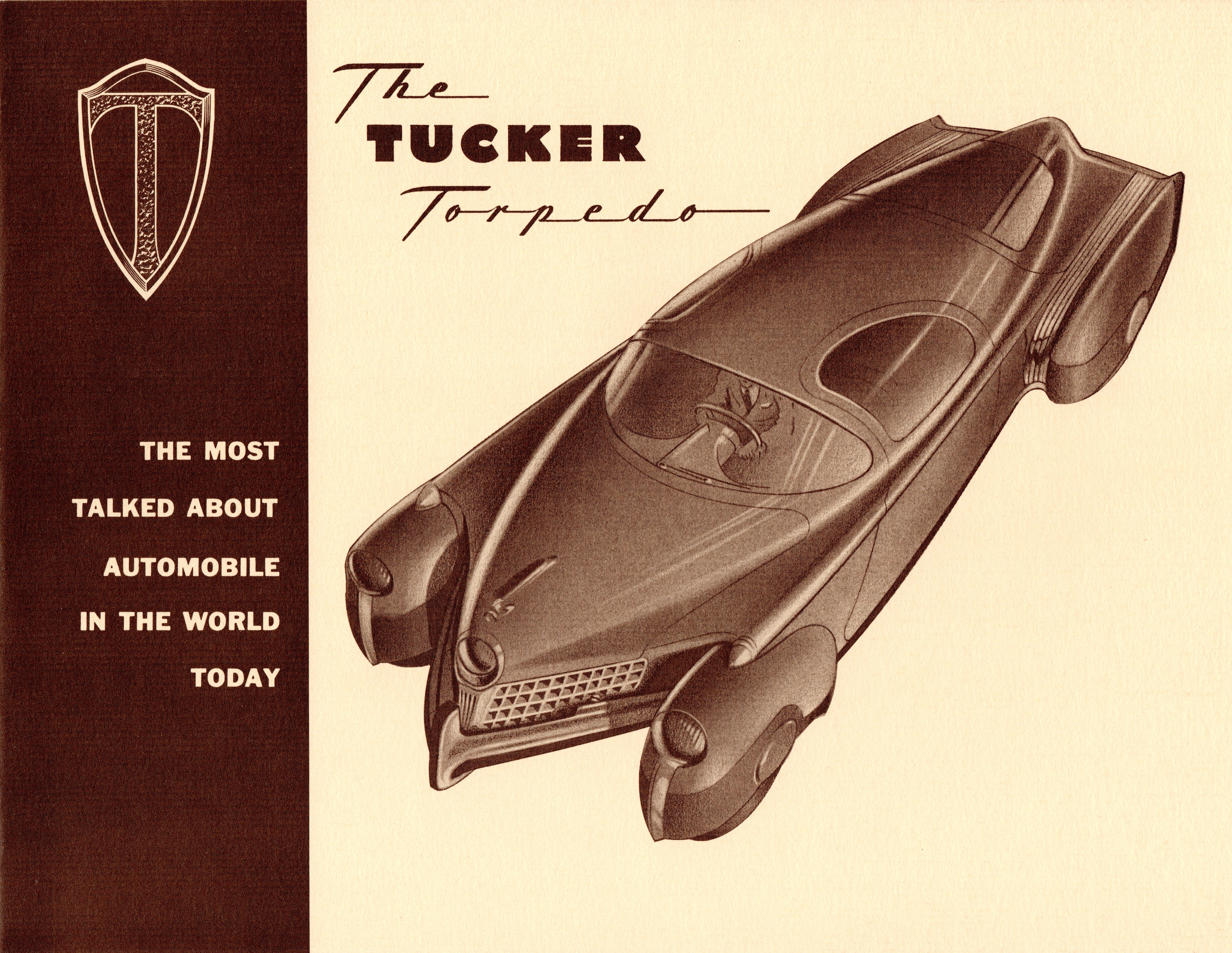|
Kaiser Frazer
The Kaiser-Frazer Corporation (1947–1953 as Kaiser-Frazer) was the result of a partnership between industrialist Henry J. Kaiser and automobile executive Joseph W. Frazer.Kaiser Cars, 1947-1955 by Kelsey Wright at AllPar, 16 Nov 2020 In 1947, the company acquired the automotive assets of Graham-Paige, of which Frazer had become president near the end of World War II. Kaiser-Frazer was one of a few US automakers to achieve success after World War II, if only for a few years. Joseph W. Frazer left the company in 1949, replaced as president by Henry's son Edgar F. Kaiser. In 1953, Kaiser bought the ailing [...More Info...] [...Related Items...] OR: [Wikipedia] [Google] [Baidu] |
Automotive Industry
The automotive industry comprises a wide range of company, companies and organizations involved in the design, Business development, development, manufacturing, marketing, and selling of motor vehicles. It is one of the world's largest industry (economics), industries by revenue (from 16 % such as in France up to 40 % to countries like Slovakia). It is also the industry with the highest spending on research & development per firm. The word ''automotive'' comes from the Greek language, Greek ''autos'' (self), and Latin ''motivus'' (of motion), referring to any form of self-powered vehicle. This term, as proposed by Elmer Ambrose Sperry, Elmer Sperry (1860-1930), first came into use with reference to automobiles in 1898. History The automotive industry began in the 1860s with hundreds of manufacturers that pioneered the Brass Era car, horseless carriage. For many decades, the United States led the world in total automobile production. In 1929, before the Great Depression, ... [...More Info...] [...Related Items...] OR: [Wikipedia] [Google] [Baidu] |
Industrias Kaiser Argentina
Industrias Kaiser Argentina S.A. (mostly known for its acronym IKA) was an Argentina, Argentine automobile manufacturer established in 1956 as a joint venture with Kaiser Motors of the United States. Headquartered in Santa Isabel District, Río Cuarto, Santa Isabel, Córdoba Province (Argentina), Córdoba, the automaker produced a variety of Kaiser Jeep vehicles and American Motors Corporation (AMC) models, including Argentina's most iconic car, the IKA-Renault Torino, Torino, before partnering with France's Renault, which bought it out in 1970. Under its new name "IKA-Renault", the company continued operating until Renault took over completely becoming Renault Argentina in 1975. The French subsidiary remained in the former IKA factory at Santa Isabel. History 1950s The government of Argentina sent a delegation to the United States in 1951 to meet with auto manufacturers interested in building cars in Argentina. Unfortunately, the market was seen as too small to justify the ... [...More Info...] [...Related Items...] OR: [Wikipedia] [Google] [Baidu] |
Tucker 48
The Tucker 48, commonly referred to as the Tucker Torpedo, was an automobile conceived by Preston Tucker while in Ypsilanti, Michigan and briefly produced in Chicago, Illinois in 1948. Only 51 cars were made including their prototype before the company was forced to declare bankruptcy and cease all operations on March 3, 1949, due to negative publicity initiated by the news media, a Securities and Exchange Commission investigation, and a heavily publicized stock fraud trial (in which the allegations were proven baseless and led to a full acquittal). Tucker suspected that the Big Three automakers and Michigan Senator Homer S. Ferguson had a role in the Tucker Corporation's demise. The 48's original proposed price was said to be $1,000, but the actual selling price was closer to $4,000. The 1988 movie '' Tucker: The Man and His Dream'' is based on the saga surrounding the car's production. The film's director, Francis Ford Coppola, is a Tucker owner and displays his vehicle on t ... [...More Info...] [...Related Items...] OR: [Wikipedia] [Google] [Baidu] |
Alex Tremulis
Alexander Sarantos Tremulis (January 23, 1914 – December 29, 1991) was a Greek-American industrial designer in the North American automotive industry. Tremulis held automotive design positions at Cord Automobile, Duesenberg, General Motors, Tucker Car Corporation and Ford Motor Company before establishing a consulting firm. Early career Tremulis was the son of Greek immigrants. His parents were Antonia and Sarantos Tremulis, who came from a village near Sparta. As a 19-year-old and without any formal training in art or engineering, he landed a job on the design team for the Auburn-Cord-Duesenberg Company in 1933. Among his projects were the now famous and classic Cord 810 and 812 series, as well as a custom Duesenberg roadster having both convertible and hardtop options. In 1936, he was named Chief Stylist for Auburn-Cord-Duesenberg, and remained in that role until the company failed in 1937. Tremulis briefly worked for General Motors before moving to Briggs-Le Baron, a custom ... [...More Info...] [...Related Items...] OR: [Wikipedia] [Google] [Baidu] |
Sears
Sears, Roebuck and Co. ( ), commonly known as Sears, is an American chain of department stores founded in 1892 by Richard Warren Sears and Alvah Curtis Roebuck and reincorporated in 1906 by Richard Sears and Julius Rosenwald, with what began as a mail ordering catalog company migrating to opening retail locations in 1925, the first in Chicago. In 2005, the company was bought by the management of the American big box discount chain Kmart, which upon completion of the merger, formed Sears Holdings. Through the 1980s, Sears was the largest retailer in the United States. In 2018, it was the 31st-largest. After several years of declining sales, Sears's parent company filed for Chapter 11 bankruptcy on October 15, 2018. It announced on January 16, 2019, that it had won its bankruptcy auction, and that a reduced number of 425 stores would remain open, including 223 Sears stores. Sears was based in the Sears Tower in Chicago from 1973 until 1995, and is currently headquartered in Hof ... [...More Info...] [...Related Items...] OR: [Wikipedia] [Google] [Baidu] |
Allstate (automobile)
The Allstate is a Badge engineering, badge engineered version of the Henry J United States, American automobile that was offered for sale through Sears, Sears, Roebuck during the 1952 and 1953 model years. History The Sears retail chain had previously marketed vehicles made by the Lincoln Motor Car Works under the name "Sears Motor Buggy" between 1908 and 1912. These horseless carriages were of the "high-wheeler" variety with large wagon-type wheels. Their high ground clearance was well-suited to muddy, wagon-rutted country roads. Customers were accustomed to mail-ordering through the Sears catalog, and the Sears Motor Buggy could be delivered to the nearest railroad siding. Development The Allstate was the brainchild of Henry J. Kaiser, who saw Sears as another means to mass-market his slow-selling "Henry J" two-door Sedan (automobile), sedan, introduced in 1950. The Allstate was essentially a Henry J, but with a number of differences that included Allstate badges on the ho ... [...More Info...] [...Related Items...] OR: [Wikipedia] [Google] [Baidu] |
Willys Aero
The Willys Aero was a line of passenger cars manufactured first by Willys-Overland and later by Kaiser-Willys Corporation from 1952 through 1955. It was also produced in Brazil from 1960 to 1971. US production The father of the Aero was Clyde Paton, former engineer for Packard Motor Car Company. The Eagle and Lark models were built from 1952 to 1954. A Wing model was available only in 1952, a Falcon model in 1953, and a taxicab in very limited production in 1953 and 1954. The Ace was the only model built through all U. S. production. 1955 saw two new models, the two- and four-door Ace sedans (renamed Custom shortly into the production run) and two-door hardtop Bermuda. Production in the U.S.A. ended that year as Henry J. Kaiser decided to give up the Kaiser and Willys Aero lines and concentrate solely on Jeeps. A total of 91,377 Aeros were built in Toledo. Toledo-built models were available with four engine options: the F4-134 Hurricane, the L6-161 Lightning, the F6-161 Hur ... [...More Info...] [...Related Items...] OR: [Wikipedia] [Google] [Baidu] |
Frazer (automobile)
The Frazer (1946–1951) was the flagship line of upper-medium priced American luxury automobiles built by the Kaiser-Frazer Corporation of Willow Run Ypsilanti, Michigan, and was, with Crosley, the first American car with new envelope body and fresh postwar styling. Named for longtime American automobile executive Joseph W. Frazer who had become president and general manager of Kaiser-Frazer, the Frazer was styled by Howard "Dutch" Darrin with some input from other K-F stylists. The new Frazer won the Fashion Academy of New York Gold Medal for design achievement. Production began on May 29, 1946 and the Frazer made its public debut June 29, 1946. There was one basic four-door sedan body shell that was shared with the similar but lower-priced (by $200 to $600) Kaiser. The Frazer used the Continental Red Seal 226 CID "Supersonic" L-head six powerplant which reached by the end of Frazer production at the conclusion of the 1951 model year. The luxury line Frazer Manhattan Series ... [...More Info...] [...Related Items...] OR: [Wikipedia] [Google] [Baidu] |
Kaiser Darrin
The Kaiser Darrin, also known as the Kaiser Darrin 161 or in short as the Darrin, was an American sports car designed by Howard "Dutch" Darrin and built by Kaiser Motors for the 1954 model year. Essentially a revamp of Kaiser's Henry J compact, the Kaiser Darrin was one of its designer's final achievements and was noted for being the second (behind the 1953 Corvette) American car equipped with a fiberglass body and doors that slid on tracks into the front fender wells. The car was named both for Henry J. Kaiser, head of Kaiser Motors, and Darrin. The Darrin was conceived as part of a movement in Detroit to compete head-to-head with European roadsters being imported to and sold in the United States in the post–World War II period. Among other products developed were the Ford Thunderbird in its initial two-seat form and Chevrolet Corvette. While the Darrin was designed attractively, it was also underpowered and, while a good performer overall, did not measure up to foreign vehicle ... [...More Info...] [...Related Items...] OR: [Wikipedia] [Google] [Baidu] |
Supercharger
In an internal combustion engine, a supercharger compresses the intake gas, forcing more air into the engine in order to produce more power for a given displacement. The current categorisation is that a supercharger is a form of forced induction that is mechanically powered (usually by a belt from the engine's crankshaft), as opposed to a turbocharger, which is powered by the kinetic energy of the exhaust gasses. However, up until the mid-20th century, a turbocharger was called a "turbosupercharger" and was considered a type of supercharger. The first supercharged engine was built in 1878, with usage in aircraft engines beginning in the 1910s and usage in car engines beginning in the 1920s. In piston engines used by aircraft, supercharging was often used to compensate for the lower air density at high altitudes. Supercharging is less commonly used in the 21st century, as manufacturers have shifted to turbochargers to reduce fuel consumption and/or increase power outputs. Des ... [...More Info...] [...Related Items...] OR: [Wikipedia] [Google] [Baidu] |
War Assets Administration
The War Assets Administration (WAA) was created to dispose of United States government-owned surplus material and property from World War II. The WAA was established in the Office for Emergency Management, effective March 25, 1946, by Executive Order 9689, January 31, 1946. It was headed by Robert McGowan Littlejohn. Predecessor agencies * Petroleum Reserves Corporation (PRC), Reconstruction Finance Corporation (RFC, June–July 1943) * PRC, Office of Economic Warfare (OEW, July–September 1943) * PRC, Foreign Economic Administration (FEA, September 1943-September 1945) * PRC, RFC (September–November 1945) * War Assets Corporation (WAC), RFC (November 1945-March 1946) * Surplus War Property Administration (SWPA), Office of War Mobilization (OWM, February–October 1944) * Surplus Property Board (SPB), Office of War Mobilization and Reconversion (OWMR, October 1944-September 1945) * Surplus Property Administration (SPA), OWMR (September 1945-March 1946) Functions The WAA d ... [...More Info...] [...Related Items...] OR: [Wikipedia] [Google] [Baidu] |





.jpg)

